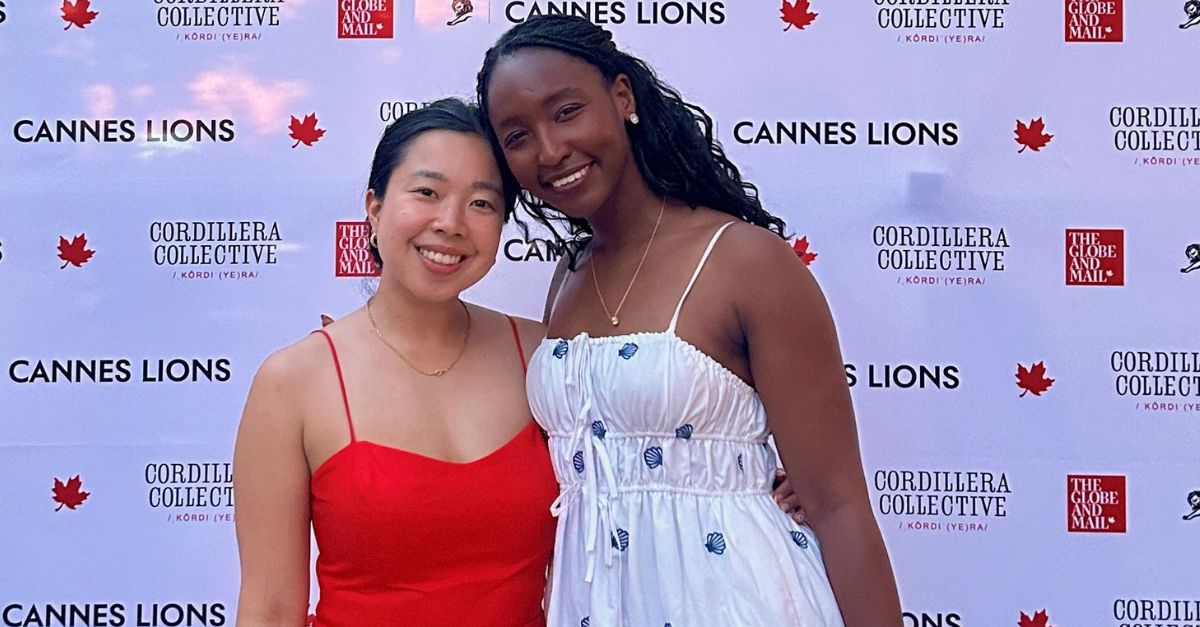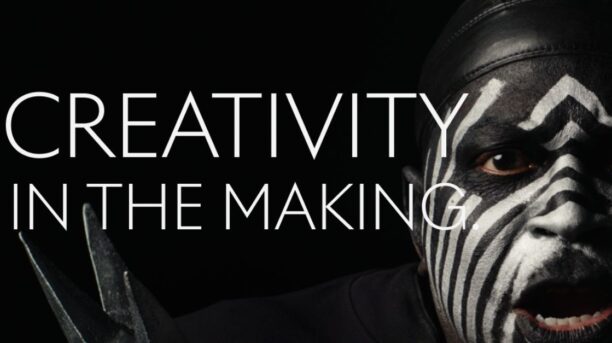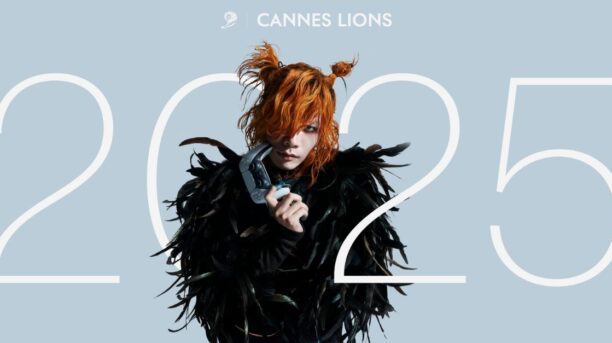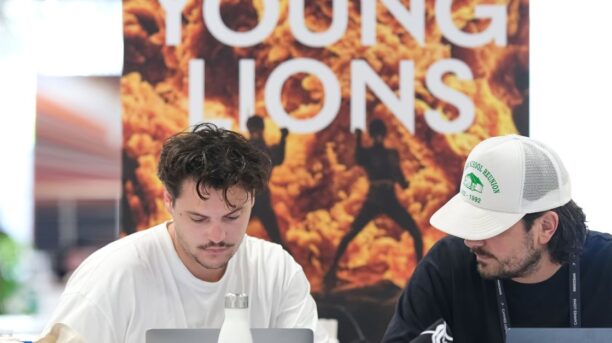The adrenaline. The deadline. The brief that changed everything. Canadian Young Lions teammates Suzanne Liu, from Uber and Arielle Uwonkunda, from Molson Coors Beverage Company, took on the world’s best at Cannes – competing head-to-head in the global Young Lions Marketers competition. Their powerful brand strategy concept for The Braille Institute earned them a coveted shortlist from the global jury, marking a standout moment on the international stage.
With over 450 competitors from 67 countries across seven categories, this year’s global competition was one of the most competitive to date. In the Canadian qualifying competition, the Marketer category is sponsored by Interac.
Marketing Chair of the Canadian qualifying competition, Susan Irving – also a Canadian Cannes Lions Advisory Board Member and Chief Marketing Officer at Kruger Products Inc. – was in Cannes both professionally and personally. She took part in the Brand Innovators Marketing Leadership Summit, speaking at the “Commanding the C-Suite: Women at the Forefront” session. But she was also there in another meaningful role: as coach and cheerleader for Suzanne and Arielle.
Back home in Canada, Susan joined Suzanne and Arielle to reflect on their Young Lions experience and the impact of being recognized on the global stage.
Before we dive into your journey, let’s begin with a quick intro. Could you both start by introducing yourselves?
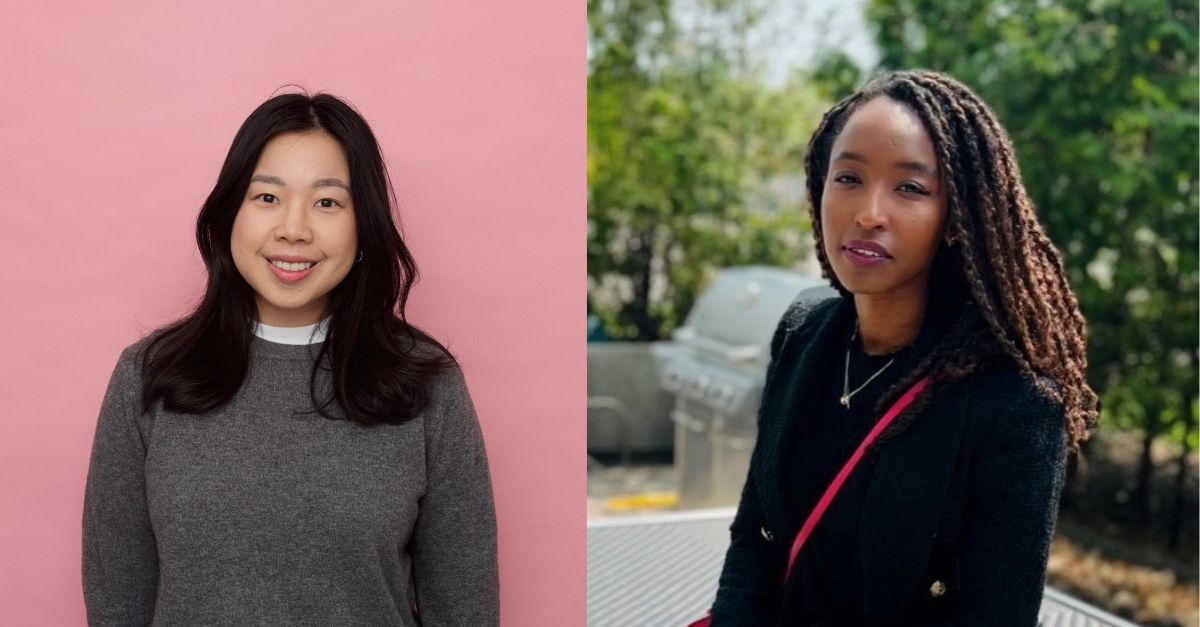
Sure, I’m Suzanne Liu and I’m a Senior Partner Manager at Uber, where I bring a unique blend of sales acumen and a passion for marketing. Although my career has been primarily in sales, that passion is what fueled me, and ultimately led me to compete in the Canadian Young Lions Marketers qualifying competition. I built my foundation with a marketing degree from UBC and gained deep brand and consumer exposure through previous roles at L’Oréal and PepsiCo.
Hi, I’m Arielle Uwonkunda, a Rwando-Canadian marketing leader with a body of work spanning four continents. I’m currently the Marketing Manager of Molson TM & the Economy Portfolio at Molson Coors, leading award-winning innovation and campaigns across beer and cider, blending cultural fluency with emotional precision and commercial clarity. I’m known for instinctive leadership and creative discipline, and I build ideas rooted in deep human behaviors category trends. I believe storytelling is an act of courage and collaboration, and I use my voice to shape culture, empower teams, and unlock bold, purpose-driven work that truly resonates.
Let’s start with that pivotal moment – when you first saw the brief. What was your gut reaction? Did it spark excitement, raise questions, or maybe even a little apprehension?
SL: My initial reaction to the Cannes brief was a strong sense of familiarity. There were striking parallels between this global challenge and the case we tackled in Canada, both centering on a non-profit in the health sector. The core objectives – driving awareness, educating the public, and dismantling stigma to seeking help – resonated deeply. This thematic consistency and the prevalence of universal human truths across both cases immediately sparked excitement. I was eager to apply our strategic thinking in this new context and explore how our ideas could resonate on the global stage.
AU: I felt a mix of excitement and responsibility. The brief asked us to reframe how people see something that’s often ignored until it’s too late: early-stage vision loss. That emotional tension, of not dealing with something until we have no choice, struck me, because we all do it. I do it. Denying, avoiding, dodging what makes us uncomfortable – it couldn’t be more human. So, from the start, we knew that if we were going to solve this brief truthfully, we had to confront that pattern in ourselves. And that meant the final idea would likely test our own comfort levels just as much as the audience’s.
In the Marketers competition, the rule is to work with your own brand. What led you to choose Heineken as the foundation for your strategy – and what unique opportunity did that unlock?
SL: During our ideation process we explored numerous brands from our respective portfolios. As we began to crystallize the high-level framework of our “big idea,” several brands emerged as potential fits. Ultimately, Heineken distinguished itself with the strongest brand identity alignment for our concept. This strategic choice was pivotal because it immediately unlocked efficiencies: Heineken’s established partnerships and robust media channels provided a ready-made ecosystem, allowing us to rapidly flesh out the tactical details of our idea rather than building from scratch. This existing infrastructure was an asset in a time-constrained environment.
AU: We chose Heineken because it had the global tone and equity to carry this idea with credibility. Its platform, “Refresh Your Perspective,” isn’t just a line, it’s a mindset. Heineken has a history of leaning into uncomfortable conversations with empathy and restraint. That gave us the freedom to tackle sensitive behavior like denial, not with shame, but with clarity.
How did you balance creativity with the need to stay true to your brand’s identity and values during the competition?
SL: Our approach to balancing creativity with Heineken’s established identity involved a brand fit assessment. We ensured that every proposed campaign element felt intuitively “Heineken,” as if it were a natural extension of their current marketing efforts. This meant deeply integrating their visual identity, brand voice, and understanding of their target audience into our tactical executions. This enabled us to craft solutions that were both fresh and consistent with the brand’s overarching strategy and the brief’s objectives.
AU: We treated Heineken’s tone like a creative compass. It’s a brand that shows up with confidence, empathy, and restraint, and we knew the idea had to reflect that. So, we looked for a space where the brand’s passion point, football, could intersect with the audience’s lived experience. That’s how we landed on the Champions League.
UNBLUR THE GAME by Suzanne Liu and Arielle Uwonkunda
Can you walk us through how you arrived at your big idea? What steps did you take, and at what point during the competition did it all start to click?
SL: Our process for arriving at the “big idea” was highly structured, beginning with an independent ideation. After analyzing the brief, Arielle and I separately brainstormed problem statements paired with relevant brand solutions. When we reconvened after a few hours, we ran these ideas through the MUSCLE framework evaluation, assessing their feasibility, scalability, and potential for impact. While there were several strong contenders, the concept we ultimately pursued was the one that truly possessed a “wow” factor – that made us question its very possibility. The moment it truly “clicked” was when the legs of the idea, from strategic pillars to execution details, began to materialize, signaling its inherent robustness and potential.
AU: Our process wasn’t linear, if anything, it was intentionally messy. We had three ideas bubbling: one rooted in Heineken, one in Uber, and one hybrid. We each took time on our own to map out a full response: interpreting the brief, identifying the insight, and crafting a big idea. Then we regrouped and asked one question: “Which one makes your heart skip a beat?” It was important to us for the idea to touch a heartstring. From competing in the Canadian competition, we learned it had to be a “big idea” and it had to have “emotion.” Our campaign, “Unblur The Game,” did both. Once we agreed on it, we started solving the case, beginning with the crucial question: “Why do people put off getting help, even when their vision’s fading?” As I said earlier, the answer was denial. So we thought – what if we didn’t explain it? What if we made people feel it? That’s how the idea came: distort the game in real time, and let the world experience what millions ignore.
What was the most challenging aspect of working under a 24-hour deadline, and how did you manage to stay focused and creative throughout the process?
SL: The most challenging aspect of the 24-hour deadline was undoubtedly the physical and mental toll. Amidst the Cannes heat, compounded by jet lag and lack of sleep, maintaining clarity of thought was a battle. We managed to sustain focus and creativity by prioritizing transparent communication. We openly communicated when a break was necessary to reset, and fluidly transitioned between independent work and collaborative sessions based on what best served the task at hand. This dynamic adaptability to our individual working styles was crucial in optimizing our output during the limited time.
AU: Honestly? Doing it all in only 24 hours. In the Canadian competition, you get a few weeks across two rounds: round one is the 24-hour sprint and if you make the top five, you get about a week to build and refine a five-slide presentation and prep your pitch for the jurors. At Cannes, you do all of that in just one day. You’re locked in a room with all the other teams and only allowed to leave for your hotel. The global competition is a pressure cooker like nothing I’ve experienced. By hour 18 we’d had no sleep, barely any food, and I hit a wall. I told Suzanne I needed to shut down for a bit and she, being the absolute rock she is, said, “Go. I’ve got you.” Three hours later, I was back and the creativity started to flow again. That moment of trust was a turning point in not only our teamwork but our lifelong friendship. The result, I think, is one of the best works of our careers. And I’d do it all again in a heartbeat.
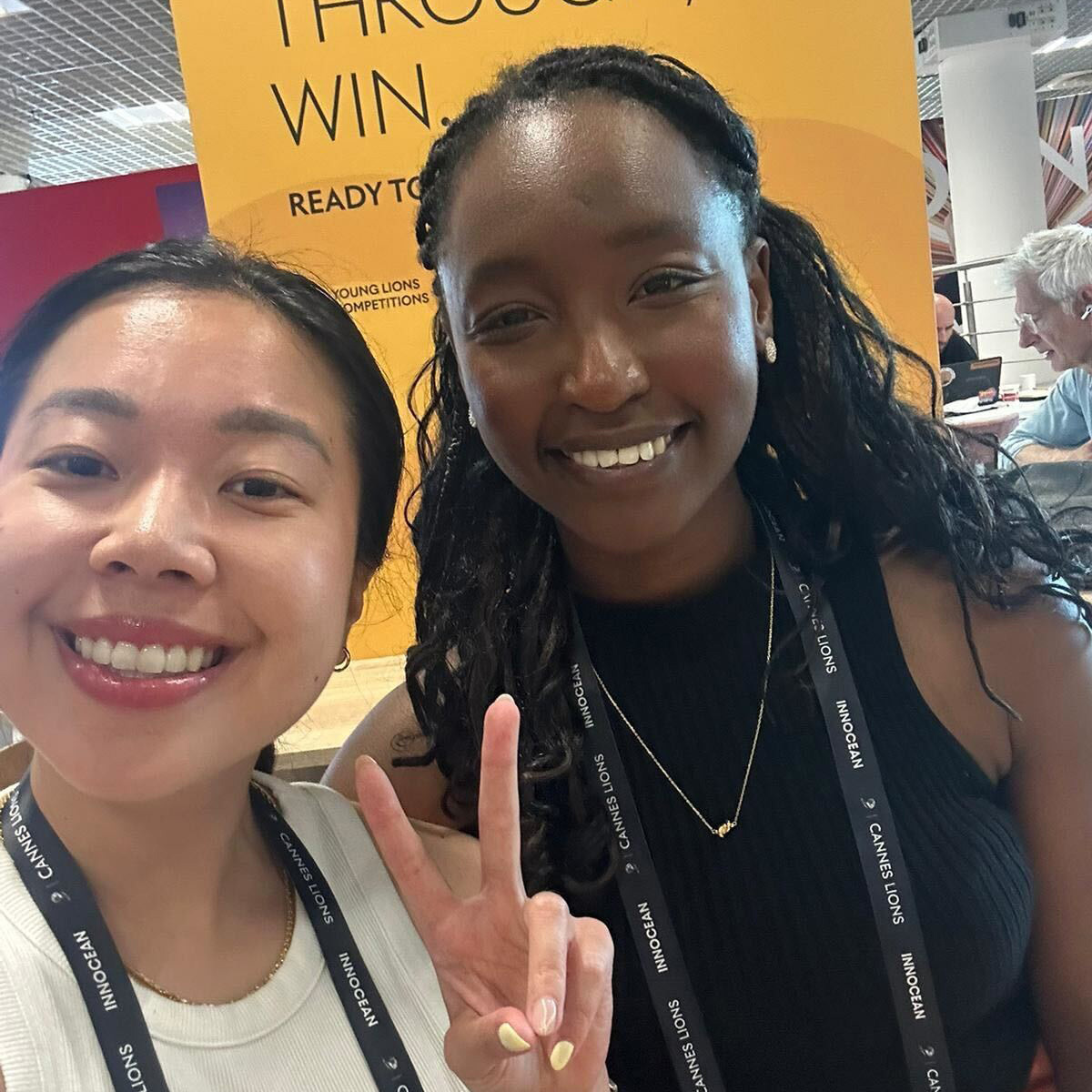
What was it like presenting your idea to the global jury? How did you tackle the presentation?
SL: Presenting to the global jury was an incredibly engaging and enjoyable experience. The setting was more intimate than the Canadian competition, with a smaller panel of five highly attentive jurors, which eased any initial nerves. Their active engagement throughout our presentation created a dynamic exchange, making the time fly by. Our strategy for the presentation was to craft a compelling narrative that served as the foundational thread of our entire submission. We then layered in the tactical and execution details, ensuring a holistic and persuasive articulation of our “big idea.”
AU: The setup mirrored the Canada qualifying competition closely – five minutes for the jury presentation and five for Q&A. Suzanne and I split the presentation just like we did in the Canadian competition, where I covered the upfront, intro, insight, audience, and strategy, and she brought the idea to life with execution and impact. The main difference was that no animations were allowed, and we couldn’t click through our own deck, so we had to be even more intentional with how we told the story. But honestly, the format is truly secondary to the content.
What feedback or insight from the jury resonated with you the most – and how do you see it influencing your future approach as a marketer?
SL: The most profound insight from the jury room that resonated revolved around the power of empathy and simplicity. The jury lead specifically highlighted how the winning campaign was masterfully crafted with humanity and empathy at its core. In an era increasingly shaped by technology and AI-driven decision-making, this serves as a reminder that genuine human emotions remain the most powerful motivators for behavioral change. This insight reinforces my belief that future marketing endeavors must prioritize deeply understanding and connecting with the human experience, building campaigns that not only inform but also genuinely move and inspire.
AU: Suhayl Limbada, the CMO of KFC Thailand, gave us feedback I’ll never forget. He said: “You had the strongest insight, the boldest idea, and the most powerful start. Where you fell short was in being too inclusive.” He was right. The brief specifically asked us to target 50+ individuals who were avoiding help for their vision loss. Hijacking the Champions League, as brave as it was, was too broad since the game’s audience spans generations. He challenged us to find a way to focus our idea more clearly on the specific lives we were trying to impact. That feedback was incredibly helpful to me. Not just in understanding why we didn’t win gold, but in shaping how I now approach creative. When I’m presented with a BIG idea, my first instinct is now: “Are we just being bold, or are we being precise and actually impactful?”
You won Gold in Canada and earned a Shortlist at Cannes – the world’s largest gathering of creative talent. What part of your Young Lions experience left the most lasting impression on you – and why?
SL: The most lasting impression from my Cannes Young Lions experience was a deep appreciation for the boundless nature of human creativity and diversity in thought, a value also championed at Uber (“Great Minds Don’t Think Alike”). Seeing the breadth of innovation, particularly other winning Young Lions submissions, often left me thinking, “I never would have thought of that.” It truly underscored how even within the same industry or business problem, individual interpretations and proposed solutions can be varied. This experience significantly deepened my respect for the creative field and the power of varied perspectives to generate groundbreaking ideas.
AU: Where do I even start? To this day, I still can’t believe the last few months really happened. Cannes was more than just a competition for me. It was a mirror. A mentor. A masterclass. At such an early point in my career, I got to learn from and be in the orbit of some of our industry’s greatest minds. But more than that, Cannes helped me find my voice. For years, I’ve felt caught between two styles of storytelling: the deeply emotional, often poetic way I’m drawn to, and the hyper-rational, sometimes clinical tone we default to in marketing. Cannes reminded me that storytelling is an act of agency. Sometimes even defiance. It’s our chance to show what we believe is true, not just what the data tells us it should be. That creative freedom, that courage to speak emotionally, truthfully, and with respect for what’s often ignored, that’s the gift Cannes gave me. And I’ll never stop being grateful for it.
Based on everything you’ve experienced, why would you encourage other marketers to take the leap and enter the Young Lions competition? What makes it worth it?
SL: I encourage other marketers to embrace the Young Lions competition because it is a transformative experience unlike any other. The competition itself is designed to push you beyond your comfort zone, challenging your critical thinking and creative boundaries. It provides a safe space for creativity, imagination, and allows you to integrate insights from both your professional and personal life. Beyond the challenge, the opportunity to connect with other like-minded individuals is truly the “cherry on top.” Meeting the cohort of Canadian Young Lions competitors and seeing the talented submissions across all categories was truly inspiring.
AU: Because it stretches you. It sharpens you. It humbles and emboldens you all at once. Yes, it pushes your creative limits, but more importantly, it gives you access to a community of world-class marketers and creatives who will shape how you think and feel for years to come. And if you’re lucky, it might do for you what it did for me: unlock parts of yourself you didn’t even know were waiting. So lean in. Embrace the chaos. Break what’s safe. And if you need support, at the start, in the middle, or on the other side, just know we’re just one LinkedIn DM away.
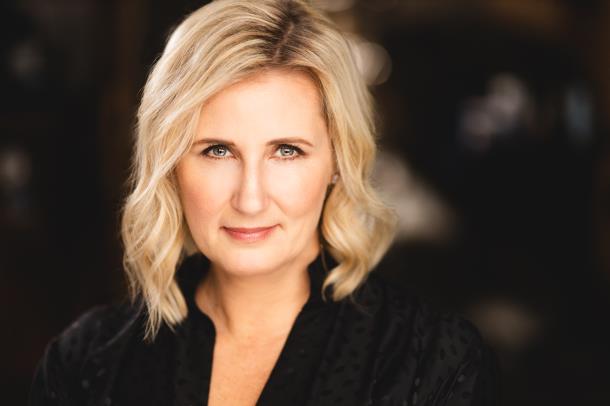
Susan Irving, Chief Marketing Officer, Kruger Products Inc., Canadian Cannes Lions Advisory Board Member
Susan is an industry leader with a passion for brands and a reputation for delivering business results through strategic integrated marketing campaigns. As Chief Marketing Officer for Kruger Products Inc., she is responsible for leading the marketing team to set the vision, strategic direction, and drive business performance for all Kruger Products brands and marketing activities in Canada and the United States. She is also a key member of the Company’s Executive Team. She is an award-winning marketer with accolades including CMAs, Cassies, Cannes Lions, Effies, The Bessies, Clios, Media Innovation Awards and Canadian New Media Awards. She was also among Marketing Magazine’s prestigious Top 30 under 30, named Canada’s Strategy Magazine 2020 Marketer of the Year and the Canadian Marketing Association 2021 Marketer of the Year. She’s passionate about building high-performing teams and delivering insight-driven work.
IG: @GlobeMediaGroup
X: @CannesLionsCAN
Hashtag: #CannesLions2025
LinkedIn: www.linkedin.com/company/globemediagroup

